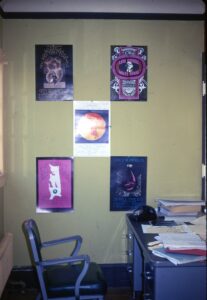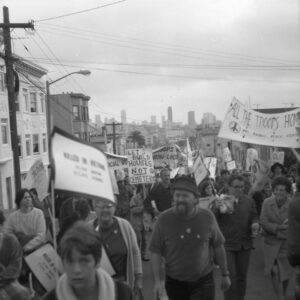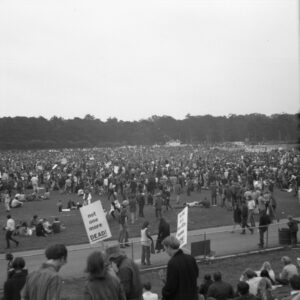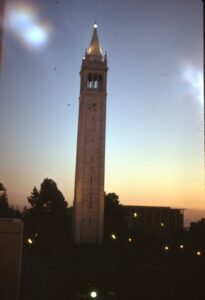In 2023 computers are all around us: our phones, tablets, laptops, and desktops, and lurking inside our television sets, appliances, automobiles, to say nothing of our workplaces and the internet. It wasn’t always that way: I was born in 1949, just as the first stored-program digital computers were going into operation. Those computers were big, filling a room, and difficult to use. Initially a user would sign up for a block of time to test and run a program that had been written and punched into paper tape or 80-column cards.cThe fact that an expensive computer sat idle while the user was thinking or mounting tapes seemed wasteful, so people designed batch operating systems that would run programs one after the other, with a trained operator mounting tapes just before they were needed. The users submitted their card decks and waited in their offices until their programs had run and the listings had been printed. While this was more efficient, there was a demand for computers that operated in “real time”, interacting with people and other equipment. MIT’s Whirlwind, TX-0, and TX-2 and Wes Clark’s LINC are examples.
The ability to interact directly with a computer via a terminal (especially when a display was available) was compelling, and computers were becoming much faster, which led to the idea of timesharing: making the computer divide its attention among a set of users, each with a terminal. Ideally the computer would have enough memory and speed so each user would get good service. Early timesharing projects included CTSS at MIT, DTSS at Dartmouth, and Project Genie at Berkeley. By 1966, Berkeley (that is, the University of California at Berkeley) decided to replace its IBM batch system with a larger computer that would provide interactive (time-shared) service as well as batch computing. None of the large commercial computers came with a timesharing system, so Berkeley decided they would build their own. The story of that project—from conception, through funding, design, implementation, (brief) usage, to termination—is told here:
- Paul McJones and Dave Redell. History of the CAL Timesharing System. IEEE Annals of the History of Computing, Vol. 45, No. 3 (July-September 2023). IEEE Xplore (Open access)
How did I come to write that paper? In the winter of 1968-1969 I was invited to join the timesharing project. At that time I had about 2 years of programming experience gained in classes and on-the-job experience during high school and college (Berkeley). That wasn’t much, but it included one good-sized project—a Snobol4 implementation with Charles Simonyi—so the team welcomed me to the project. For the next three years I helped build the CAL Timesharing System, performed some maintenance on the Snobol4 system, and finished my bachelor’s degree. In December 1971, CAL TSS development was canceled, and I graduated and moved on to the CRMS APL project elsewhere on campus.
Those three years were hectic but immensely enjoyable. The team was small, with under a dozen people, housed first in an old apartment on Channing Way and then in the brand-new Evans Hall. Lifelong friendships were formed. People often worked into the night, when the computer was available, and then trooped over to a nearby hamburger joint for a late meal. Exciting things were going on around us. There were protests, the Vietnam War, and the first moon landings. Rock music seemed fresh and exciting. I had met my future wife in 1968, and we were married in 1970.
As CAL TSS came to an end, we all agreed the experience could never be equalled. But we didn’t realize people in the future would be interested in studying our system, so we weren’t careful about preserving the magnetic tapes. However many of us kept manuals, design documents, and listings, plus a few tapes. In 1980 and again in 1991 we had reunions and I offered to store everything until it became clear what to do for the long run. Around 2003 I started scanning the materials and organizing a web site. In 2022 the Computer History Museum agreed to accept the physical artifacts, and this year they agreed to host the web site:




